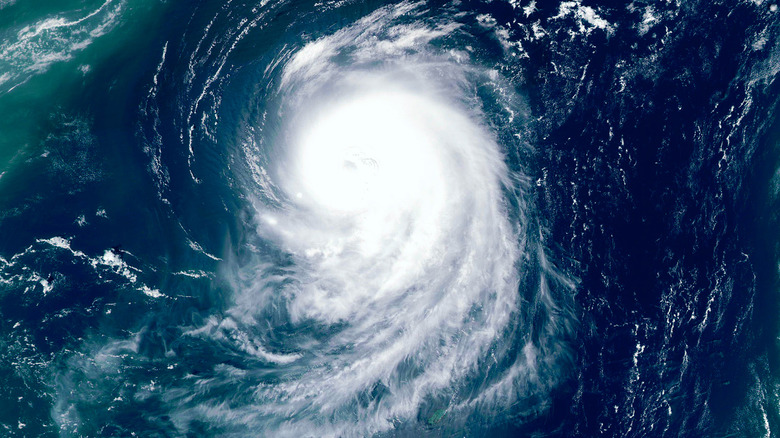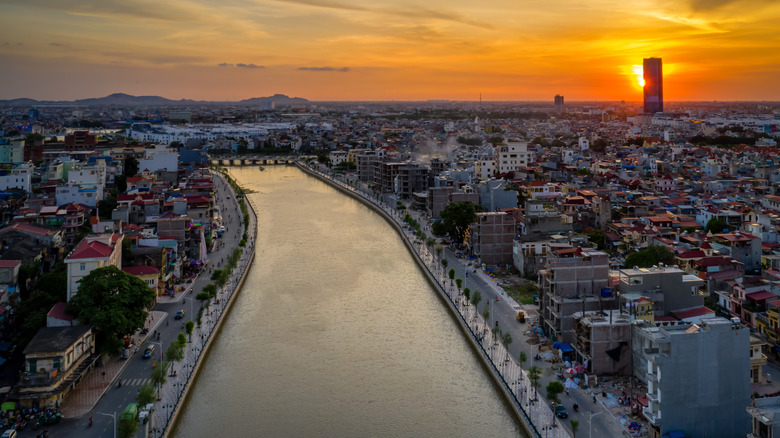The Truth About The Deadly 1881 Haiphong Typhoon
A typhoon is a very powerful type of tropical cyclone. It can create winds as strong as 150 miles per hour or more (via ABC News), and they are known as the most violent and strongest storms ever. This particular storm usually forms in the Pacific Ocean, which is the site of where the most number of storms are formed every year (via Britannica). As a result, Southeast Asia is the region mostly hit and affected by typhoons.
The Philippines is typically hit with more typhoons than any other country, reported Time magazine. And like The Philippines, Vietnam has a typhoon season that lasts year-round, according to Weather. It is also one of 10 countries most susceptible to these tropical storms. In recent years, the country has seen its fair share of deadly storms, and they've lost thousands of citizens to wild weather. Per Facts and Details, for more than four decades between 1954 and 1999, the country was affected by 212 typhoons.
Yet, no other storm that touched Vietnam caused the massive loss of human life like the Haiphong typhoon did. In 1881, a huge and powerful storm made landfall in Vietnam and killed hundreds of thousands. It is considered the third-deadliest storm in history, per Weather Underground.
A historic disaster for Vietnam
Today, the city of Haiphong, Vietnam (pictured), is home to 2 million residents and a crucial port urban center (via Off Road Vietnam). But in the late 19th century, it was the site of the worst natural disaster to ever affect Vietnam (then called Dai Nam).
In late September 1881, a storm formed off the coast of the Philippines. It rapidly grew stronger and traveled west (via Royal Meteorological Society). On October 8, 1881, a typhoon brewing in the Gulf of Tonkin hit the body of water like never before (via Hurricane Science). The inlet was a major travel way for Vietnamese, but when the storm hit, the closest city of Haiphong would be heavily damaged. According to Facts and Details, the storm sent high tides of water and caused severe flooding. It was left submerged. Some 300,000 people lost their lives, but some estimates say it could be more. Most of the storm's victims were residents of the city and nearby towns.
In the aftermath of the catastrophic disaster, it left the city extremely vulnerable during the rebuilding process. Many more would die due to widespread exposure to diseases and hunger, per National Interest.
A full century would pass and Vietnam would continue to encounter other deadly typhoons, according to the World Health Organization. But none came close to the 1881 storm. Some have called it the most devastating storm in history.

